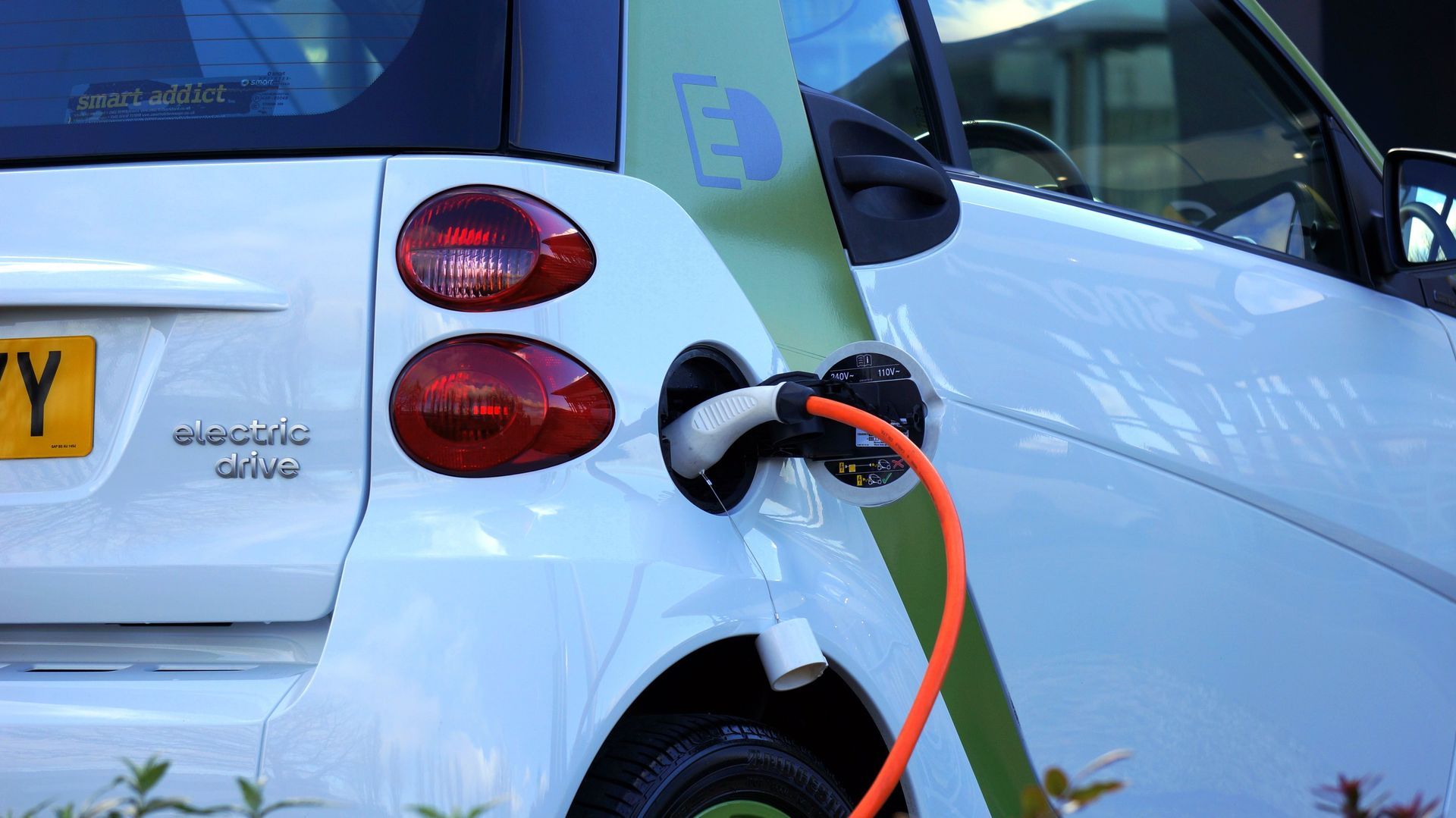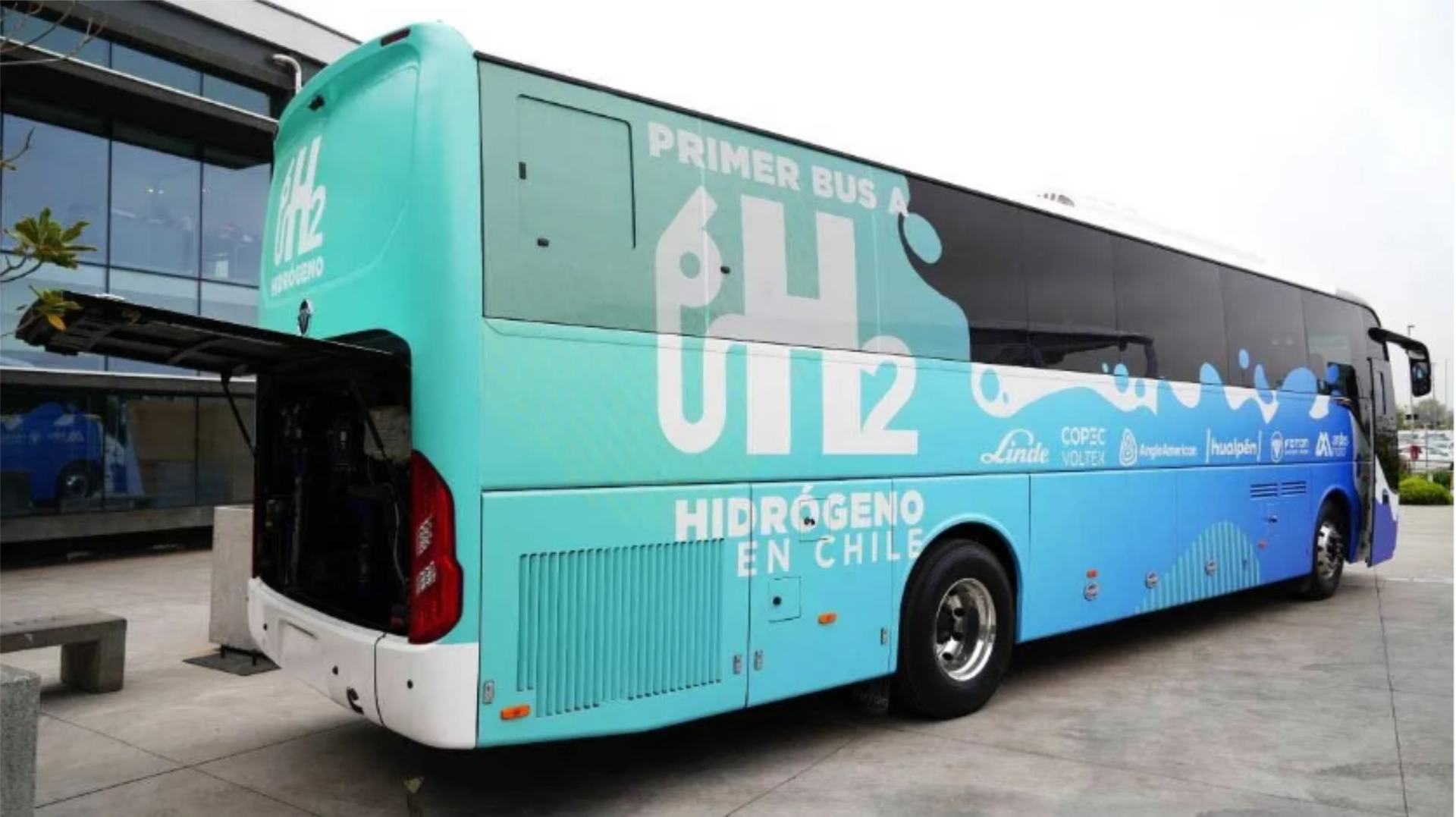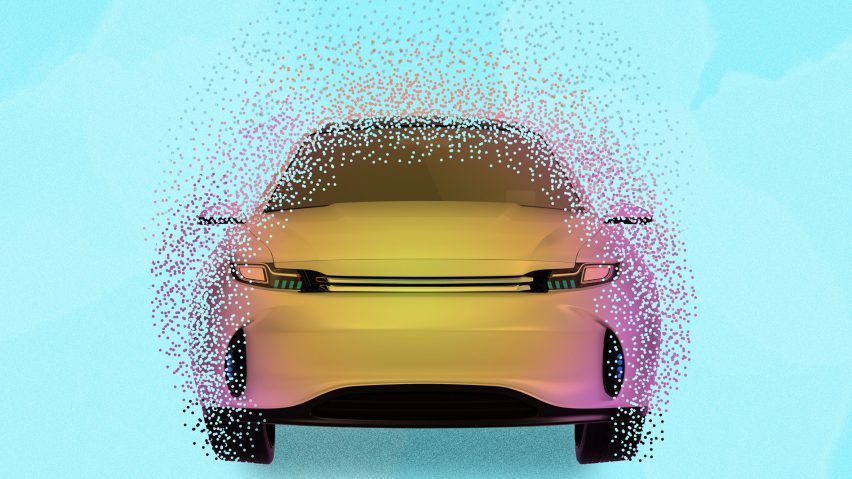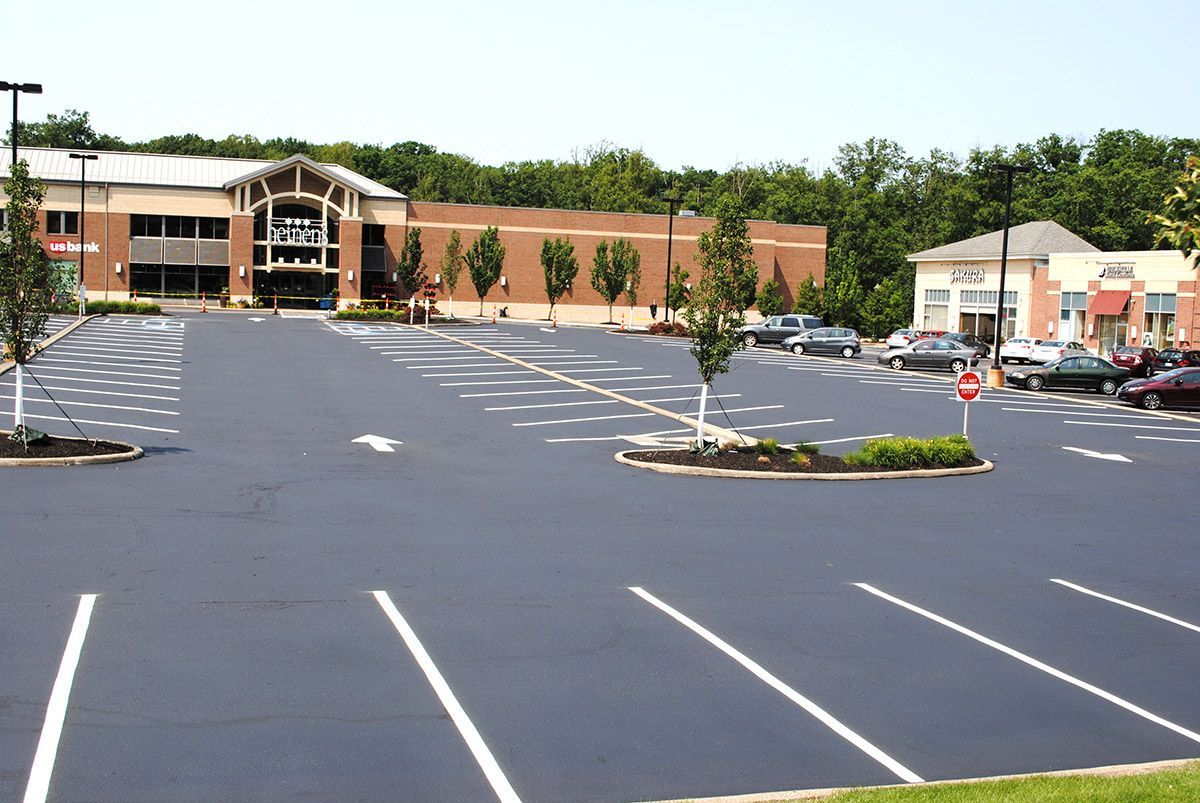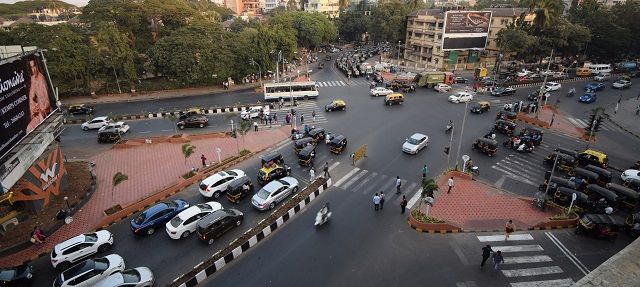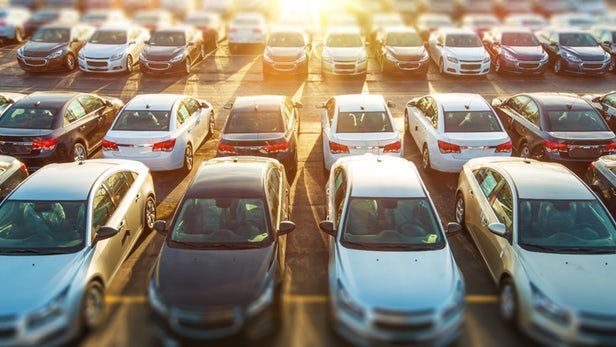Transportation Engineers Are Legally Obligated to Protect the Public. It's Time to Demand They Do So.
Steffen Berr serves as a Director of the nonprofit Build the Lanes, which aims to educate the public about the nature of transportation systems. He currently resides in the Netherlands. This article first appeared on LinkedIn, and it is republished here with permission. You can connect with Build the Lanes on YouTube and Facebook.
“Safety first.” It’s a phrase we’ve heard in nearly every modern profession. Doctors have the Hippocratic Oath to “Do No Harm.” Fiduciaries are legally obligated to serve the financial interest of their clients. And civil engineers are governed by the American Society of Civil Engineers (ASCE) Code of Ethics. The Code is split into five distinct sections, but begins with the most important, that engineers: first and foremost, protect the health, safety, and welfare of the public. Although this line is simple and straight forward, it has fallen on deaf ears in the transportation profession for far too long.
The Infamous Collapse
In the classrooms that teach these ethic lessons, there is no example used more than the infamous Hyatt Regency Walkway failure in Kansas City. On July 17th, 1981, during a tea dance celebrating the hotel’s grand opening, two of the suspended walkways collapsed. 114 people were killed and 216 more were injured. The tragedy horrified the nation and sparked a turning point in the profession and a new commitment to engineering ethics. It is an excellent example to teach students of how seriously things can go wrong if safety is not taken seriously. But there is also another reason many curricula keep using it. It is easy to teach because it is very straightforward.
An extensive investigation into the collapse revealed that multiple parties failed in the responsibility to report and prevent the danger. However, investigators concluded that if the professional engineers had performed their legally obligated duties to protect public safety, the tragedy would not have occurred. As a result, the two structural engineers responsible lost their licenses and were expelled from the ASCE.
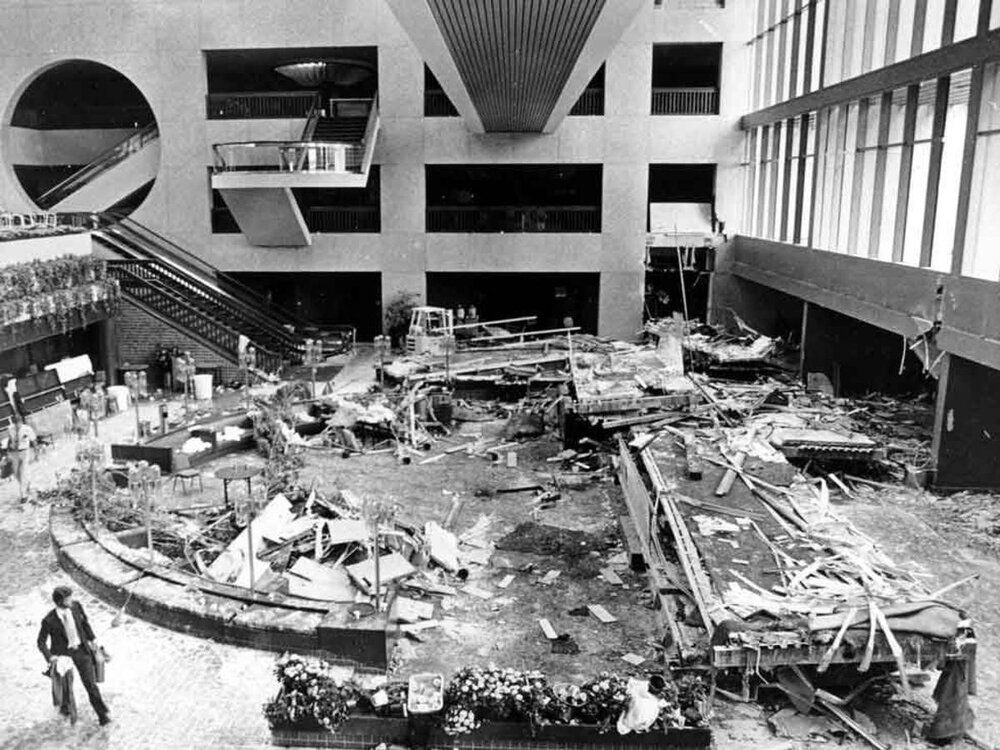
All the stakeholders involved in this tragedy had aligning interests. An engineering firm does not want to approve a dangerous structure that could kill people and ruin its reputation. The structure’s owner doesn’t want a building that might kill or injure patrons. Cities don’t want unsafe structures in their jurisdiction. And customers certainly don’t want buildings falling on them.
Therefore, the lesson is that sidestepping the duty of protecting the public first and foremost can cause catastrophes and the consequences hurt everyone, even those responsible. But what if an engineering project hurts public safety but is less obvious than a collapsed walkway?
This is something many university programs don’t prepare civil engineering students for, and that’s a shame because many quandaries in the real world are not so clear. Fortunately, most of the branches of civil engineering have maintained improving safety records regardless. Between the years 2000 through 2019, the number of Americans killed in flash floods ranged between 29 per year to 175 per year. These numbers are still regrettable, but nevertheless a major achievement. The likelihood of dying from choking is nearly 30 times higher. However, there is a glaring exception. The grim figures of transportation engineering reveal the danger of not thinking ethically in less straightforward scenarios.
The Transportation Exception
The numbers are damning. According to the Association for Safe International Road Travel (ASIRT), approximately 38,000 Americans are killed every year in the road transportation system. 4.4 million more are injured enough each year to require medical attention. That is equivalent to more than 330 Hyatt Regency Walkways failing a year, nearly one every day. It is so high that the transportation system is the leading cause of death for people between the ages of 1-54. If driving was classified as a five-year pandemic, it would have claimed the lives of 180,000 Americans and hospitalized 20 million more.
The situation has also not improved much. In the past ten years, the annual traffic death toll has not budged, and it has nearly doubled for pedestrians and cyclists.
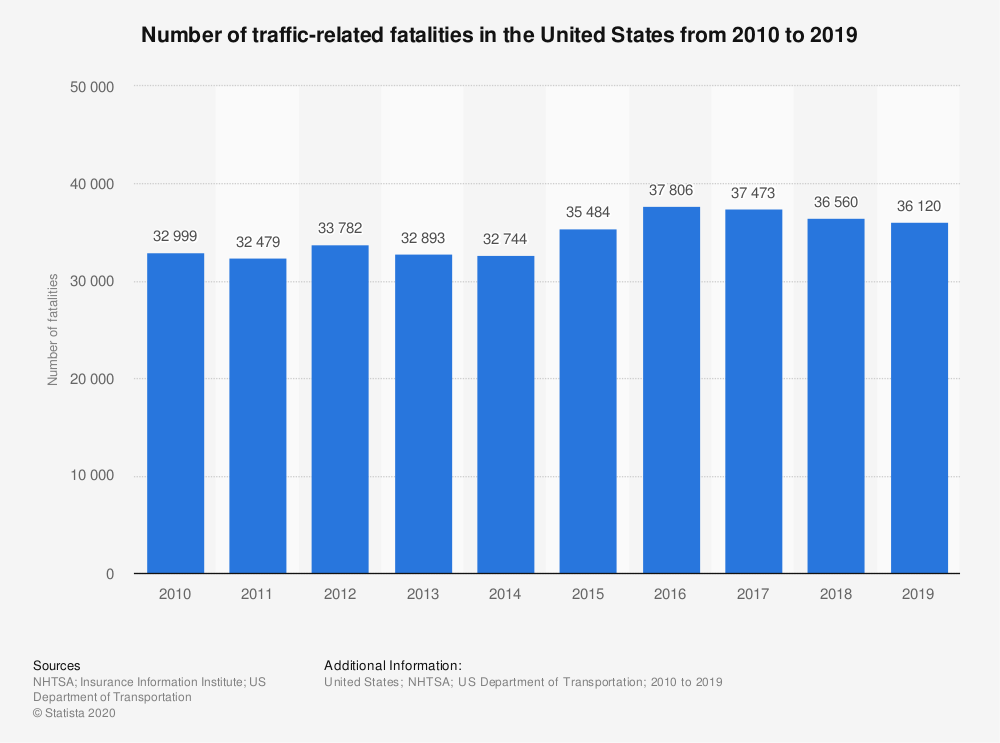

Unfortunately, these numbers may only leave a small impression on a population and community that has become numb to the carnage, but it is vital for society to recognize how incompatible it is with the safety standards it demands in every other aspect of life. It is even more important to recognize that these numbers represent a total failure to protect public safety first and foremost and we have witnessed a catastrophic failure of engineering ethics.
Imagine if a disaster experienced annually on our transportation system occurred just once in any other engineering field. Suppose a major dam suffered a catastrophic failure and the resulting flood killed 40,000 Americans, injured several million more, and caused billions of dollars of property damage. The public would howl for accountability and justice. It would be covered nonstop by the news media. The courts would be overwhelmed by an avalanche of litigation and multiple levels of the government would launch civil and criminal investigations. Major reform would be immediate in the profession.
But we don’t see this in the transportation sector. The annual death toll from car accidents remains high. Why? Perhaps because the measure of success remains the prioritization and “efficiency” of motorized traffic and not people’s wellbeing.
A Dangerous Paradigm
When a road facility goes through a traditional design process, it is thought that there are three interests competing with one another: safety, traffic efficiency, and aesthetics. Safety measures such as reducing the number of lanes, shrinking intersection sizes, or banning the right turn on red may significantly improve the safety, but might impact on the traffic efficiency and could cause longer travel times.
The aesthetic interest concerns beautifying the facility, making the environment more inviting for active use, and turning the area into a public space. However, it is thought that this could decrease safety as different transportation modes are mixed and traffic efficiency might go down as cars are slowed down by pedestrians and cyclists.
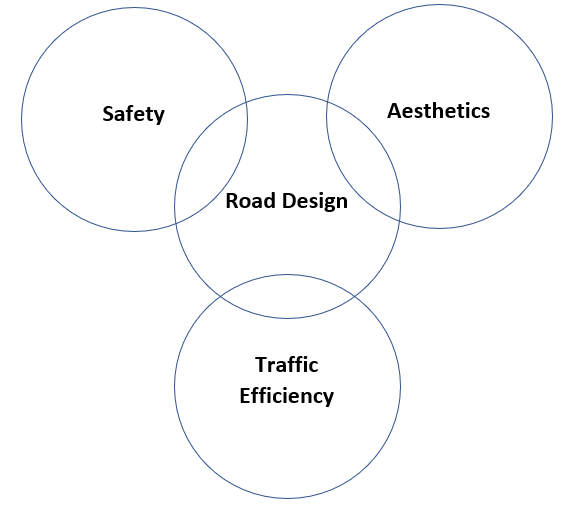
And with this paradigm in mind, the order of importance on many of our urban roads are:
- Efficiency
- Safety
- Aesthetics
Consider one specific example in the photo below:
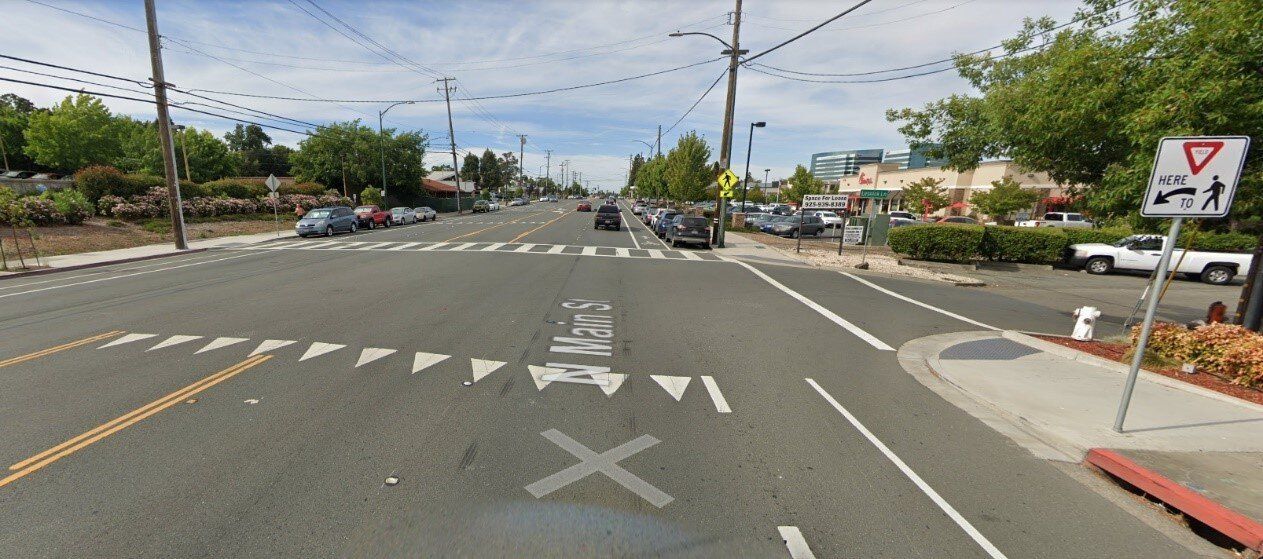
This kind of crossing is common in North America and one can tell the intent is to prioritize traffic flow. Consider the following:
- The speed limit is 35 mph and the average measured speed is above 40 mph. These speeds approach highway conditions despite being in a residential and commercial area.
- The road is five lanes wide, which includes a left turn lane. This road is underused during non-peak hours, meaning the extra lanes are present to mitigate peak hour congestion.
- Pedestrians must cross five lanes of 40 mph traffic. The transportation industry knows the average chance of death of a pedestrian being struck by a car at this speed is 45%. This setup would not exist in a “safety first” approach.
- Bike lanes are sandwiched between parked cars and the travel way, forcing cars to cross over and expose cyclists to being doored. Even though it is proven that painted bike lanes have no statistical impact on safety, cyclists are placed directly next to 40 mph traffic.
- The road does not offer aesthetic value or resemble a public space. No sane person would describe this as a multifunctional area except a few traffic engineers who love to throw around words like “multimodal road” because painted bike lanes are present.
We see the prioritization of traffic efficiency over safety everywhere around us. This sad reality is extremely unfortunate because a transportation engineer cannot hold public safety paramount unless safety is the top priority. Even though the title “traffic” or “transportation” engineer might imply the most important thing is the traffic flow, safety is must always be first. Just as a structural engineer must design structures, the safety of the structure comes first and foremost. If the structure is unsafe, nothing else is possible.
Setting Priorities Straight
An approach that prioritizes safety would have this order:
- Safety
- Aesthetics
- Efficiency
Consider the following road below in Groningen, a town in the northern part of the Netherlands:
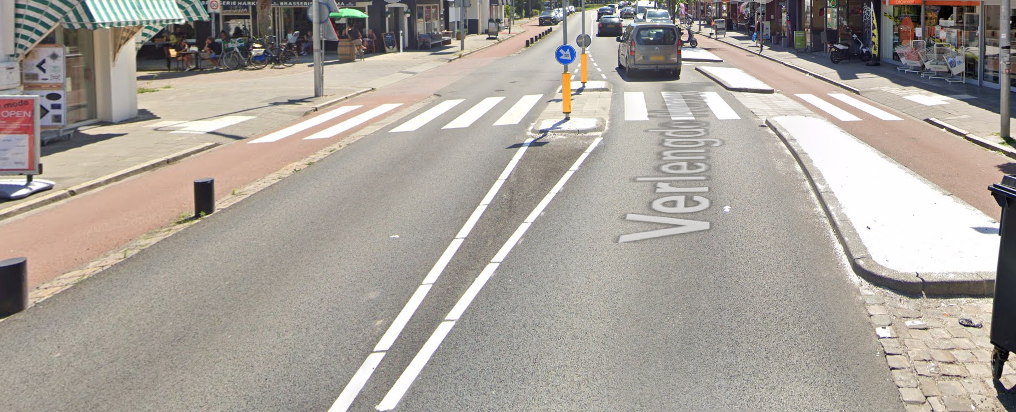
- The speed limit is 30 km/hr or 18 mi/hr. The chance of death at this speed is just 7%. Drivers are also twice as likely to yield to pedestrians at this speed versus 40 mph.
- The lane is only two lanes wide, removing passing as an option.
- Pedestrians must cross only two lanes of car traffic and may do so one at a time.
- The bicycle lanes are physically separated and do not conflict with parked cars.
- The space has aesthetic value and feels more like a public place since it is comfortable for pedestrians, cyclists, and cars.
These setups are common in the Netherlands and have been clearly designed with a “safety first attitude”. But just like a building can be safe and be useful, a road that is designed with a strict safety-first mindset can still have efficient traffic flows and aesthetic value. According to INRIX, Groningen drivers lose just 40 hours a year, less than half the time the average American loses, proving that a safety-first mindset can still have efficient traffic flow. Interestingly, it seems that the safest cities/countries in the world for driving also lose the fewest hours. This casts doubt on the validity of the traditional school of thought for competing interests on the road and that these interests may not be mutually exclusive. So long as they are addressed in the correct order, they all can be achieved.
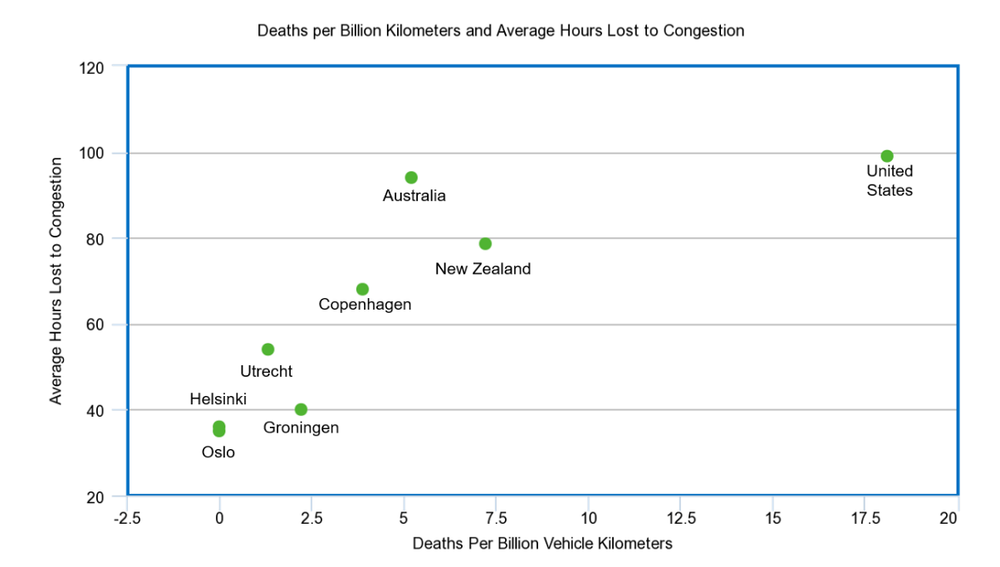
Even as we discuss how setups like the example in Groningen “look” safer, the data supports it. The calculated fatality rate in Groningen is approximately 2.2 deaths per billion vehicle kilometers. This is nearly nine times safer than the average fatality rate in the United States which stands at approximately 18.1 deaths per billion vehicle kilometers. Nor is this a cherry-picked example. We can see that both cities and countries respectively around the world that have put an emphasis on safety significantly outperform the United States. Both Helsinki and Oslo have announced once again that no traffic deaths occurred within their jurisdictions. Utrecht has a rate of just 1.3 deaths per billion vehicle kilometers, and Copenhagen has a rate of 3.9 deaths per billion kilometers. Many of these cities have announced a “Vision Zero” policy and are becoming models on how to achieve it.
Vision Zero, like many innovative transportation ideas, began in Europe and slowly trickled over to the United States. The concept is that every traffic death is preventable and transportation authorities should set a target of zero. Hundreds of cities around the world have adopted it as official policy, including dozens of American ones.
Advanced or Basic?
The new idea sounds exciting for the public, but it is important to remember that for civil engineers, vision zero is nothing new. It is simply many in the transportation profession are waking up to the legal obligation of “protecting public safety first and foremost.” Implementing vision zero is not some lofty progressive goal, it is the minimal acceptable standard to the ethical transportation engineer. Committing to anything less is unethical and amounts to engineering negligence.
Unfortunately, despite the adoption of a vision zero policy across the country, the needed mainstream shift of priority from traffic efficiency to safety has not occurred. Far too many engineers in positions of authority are resistant to changing this status quo. Some in the profession have even attempted to discipline peers for questioning road policy and calling for reform.
Does this mean that transportation professionals are bad people and solely to blame for the transportation pandemic in the U.S.? Certainly not. But just as Dr. Semmelweis’ peers in 1847 bristled at the idea that they might be killing their patients by not washing their hands during medical procedures, a portion of transportation professionals are also actively hostile to the suggestion that they bear some responsibility of the death toll in this country, despite being in the best position to do something about it. Many more who are well intentioned were not prepared by university curricula to think proactively about applying ethics to design and end up learning from peers to do things as they have always been done. For others, the profession just represents a paycheck and they have not considered the issue. Still, another portion of engineers and planners have recognized the problem and have worked to bring reform from within. The development of manuals from organizations like the National Association of City Transportation Officials and engineers pushing for lowering speed limits in communities around the country are good examples. Unfortunately, these individuals are often stymied by the great barrier of the infamous “standards.”
Standardization
Standards are a staple of the transportation engineering profession. They are essentially pre-made templates that civil engineers and contractors are expected to follow. For example, if a curb is called out on an engineering plan, it is not expected that it will be designed from scratch. (Yes, curbs are actually designed). In a city’s or county’s standard plans, there are a series of pre-made curbs the engineer can select from. These series already have a defined width, height, slope, other parameters that can be referred to on an engineering plan. Original design is less common than many outside the profession would expect.
Most of what the transportation industry works on is standardized in some way. Everything from the layout of cones that remove a travel lane during construction, the width of certain travel lanes, to the thickness of pavements. At first impression, this sounds extremely efficient and a great way to streamline work. Unfortunately, it isn’t, because quite ironically, the only thing that doesn’t seem standardized in the industry is what standard everyone is using.
Nearly every level of government has its own set of standards. The California Department of Transportation has one. The federal government has others. The City and County of Sacramento have their own ones respectively. Even different departments within the same government can have their own standards. Basically, there are thousands of different rule books for very similar kinds of work all over the country. Every time there is a new project with a new client, an entirely different set of rules must be followed. Often on larger projects with multiple municipalities involved, it is a herculean effort just to have all parties agree on what set of standards will take precedent over the others.

What do standards have to do with protecting the public? Quite a lot. The natural result of standards is that everything becomes…standardized! This can be good for removing subpar designs, but it can completely squash innovation. If everything is done by the standard, anything new that falls outside of its purview cannot be implemented. This leaves innovation in the hands of bureaucrats, a match that can even make Tinder seem attractive. It is one reason why roundabouts took so long to appear in the United States. No standards existed for them, and until they did, there was very little municipalities could do to implement them, even if they wanted to.
Imagine for a moment if the government had tried running something like the Apollo Space program based on a “standards approach.” It would have been impossible. Reaching the moon had never been done before. New ideas had to be tried and experimented with. New technology had to be invented. Creating a safe transportation system is not so different in some ways. There has never been a year since adoption of the automobile in the United States that the death toll from the transportation system has approached zero, so innovation is needed.
But, because the industry relies heavily on a complex web of standards, experimenting with anything new has become legally risky. If a lawsuit arises from a traffic accident against the city or the engineering firm involved, the engineer must simply show that they followed industry standard, regardless if it is proven to be the safest design or not. In other words, in exchange for ensuring uniformity the price paid is that the engineer is largely excused from ensuring that what is built is in the best interest of public safety. This kind of tradeoff does not exist in the other branches of civil engineering.
This tradeoff for uniformity might sound appealing at first, but it has one glaring weakness. If the standards are wrong or incomplete and end up creating infrastructure that does not hold public safety paramount, the profession has sacrificed any of the benefits for all the disadvantages. The web of standards would guarantee a uniformity of more dangerous infrastructure and would make an innovation and changing death rates very difficult. In other words, it is the same predicament we are in today as the numbers show us.
This leaves transportation engineers and other professionals in the industry at a crossroads. As things stand, the industry is not honoring its ethical obligations. The canons of civil engineering require protecting the public to come before all else, but steps to make this happen are shelved out of fear of hurting traffic efficiency. Not only is this unethical, but it is also unnecessary. Research shows that aesthetics, safety, and efficiency are not mutually exclusive. The safest cities for driving in the world often have the lowest congestion levels. Therefore, the time has come for reform to put priorities in order and make following the standard and doing the safest thing identical. A national conversation within the transportation engineering field must be had to reform the notion of safety and follow examples of countries that have figured it out.
Asurza Engineers Ltd. - www.asurza.ca - Ontario, Canada.
Subscribe to receive the latest news and articles
Subscribe to receive the latest news and articles
We will get back to you as soon as possible.
Please try again later.
